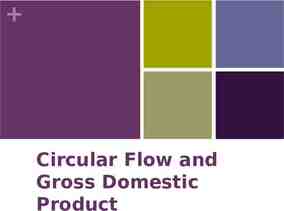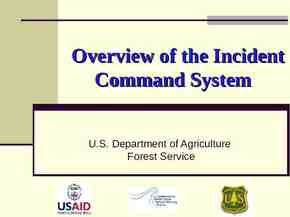46th Annual Educational Conference & Exhibition Patient Access:
24 Slides265.87 KB
46th Annual Educational Conference & Exhibition Patient Access: The First Connection to a Lasting Impression September 21 – 24, 2014 Medicare Audits & Patient Access Presented by : Michelle Way, Revenue Cycle Integrity Specialist Otani Consulting Group, Inc.
Welcome
Healthcare – Is Our Job Getting Easier? Let’s take a minute and discuss ICD-9 vs. ICD-10 Today under ICD-9 billing codes there are 13,000 diagnostic codes. In order to smooth the billing process and reduce healthcare, 68,000 ICD-10 codes were developed! Let’s look at a few of these necessary codes . cost in
ICD-10 V97.33XD: Sucked into jet engine, subsequent encounter. What? A patient was sucked into a jet engine, survived, then sucked in again? Y93.D: Activities involved arts and handcrafts. What? Arts and crafts are so dangerous they need a billing code no hot glue guns or knitting needles.
ICD-10 V00.01XD: Pedestrian on foot injured in collision with roller-skater, subsequent encounter. What? W55.41XA: Bitten by pig, initial encounter. What? Do they have another code for subsequent encounter -- time to get away from the pig. But let’s not pick on pigs--- W61.62XD: Struck by duck, subsequent encounter. What?
ICD-10 W55.29XA: Other contact with cow, subsequent encounter. What? What, precisely, is the contact with the cow that has necessitated a hospital visit? V91.07XD: Burn due to water-skis on fire, subsequent encounter. What/How? Can this really happen W220.2XD: Walked into lamppost, subsequent encounter. OKAY this one is for me!
How to Prepare for Your Next Medicare Audit No one likes to be audited, especially by the federal government. However, the increase in Medicare abuse has caused the Centers for Medicare and Medicaid Services (CMS) to consistently audit healthcare providers that receive federal Medicare dollars. **Patient Financial Services audits are often meant to recover any inaccurate or improper payments that were made via Medicare claims.
“Au d i t- P ro o f i n g ” Your Department The best way to survive an audit and make yourself “auditproof ” is to manage your department as best you can in accordance with all applicable rules/requirements and regulations governing reimbursement. Here are a few suggestions
“Au d i t- P ro o f i n g ” Your Department Suggestions: Know and understand the requirements for Patient Access The big ones are: Patients Rights, Advance Directives, Medicare Secondary Payor, Important Message For Medicare, *Safe Surrender (DHS) Know and understand the flow of information from the registration system to clinical systems. Facility wide “Team” effort!
“Au d i t- P ro o f i n g ” Your Department Suggestions: Take the time to write things down. Develop P&P as well as training documents to educate staff on requirements Ensure your P&P’s are consistent with CMS guidelines If you don’t document your process, the best explanations will be of little help during an audit Discuss compliance at every staff meeting Ensure that your staff understand the importance of these job requirements Elevate their position to a “profession” not just a “position”
“Au d i t- P ro o f i n g ” Your Department Suggestions: Periodic self-audits are also required Audit charts to ensure requirements are being adhered too Follow up on areas needing improvement Maintain records of audits Training, training, training Medicare compliance should be comprehensive training upon hire and a mandatory refresher annually Training on Medicare and the purpose of auditing. Not only will this keep your staff informed, but training on the books will demonstrate to CMS the seriousness with which you take the matter
CMS Audit Process For Advance Directives Typically the facility will receive a letter notifying them of anticipated audit Once CMS arrives a complete review will be conducted utilizing a “Surveyors On-Site Checklist”. This document has 5 sections with a total of 57 items listed For ABC Hospital the Advance Directive (AD) information on the eHR did not match the documentation in the registration system - - PROBLEM!!
CMS Audit Process For Advance Directives CMS cited the facility and the facility had 90 days to respond to CMS with an action plan Immediate corrective action was taking place at the facility CMS had 30 days to accept or reject the proposed facility action plan CMS could not agree to timelines, accuracy goals, improvement timeline When action plan was approved, CMS had any time after 90 days to come back and audit again
CMS Audit Process For Advance Directives Facility started weekly meetings with all managers that had areas cited Registration audited daily all charts on the floors (100%), then after staff accuracy increased the audits changed to weekly then monthly Employees not improving were put on a PI Plan Audit results were submitted to Administration for record keeping and for submission to CMS on facility wide report
CMS Audit Process For Advance Directives Audits continue today and anytime compliance is below 95% facility returns to weekly auditing A major issue at ABC Hospital was that the registration system and clinical charting system did not flow information back and forth. So if Patient Access asked the AD question, documented the response - then the nurses inquired about AD and documented the outcome the documentation often did not match the registration system ISSUE!
Lesson Learned at ABC Hospital It was found that when CMS identified one deficiency in an area they tended to dig really deep in anything that fell under that umbrella. For example: When CMS found that restraints were not done correctly, they started digging deep into all Patient Rights areas, which resulted with the findings and tremendous focus on Advanced directives. Each time CMS came back to review the status of the action plan they would survey a different area and potentially find another item to add.
Why Does CMS Audit For MSP The Medicare Secondary Payer (MSP) program is designed to reduce costs to the Medicare program by requiring other insurers of health care for beneficiaries to pay primary to Medicare. It applies in three situations: where there is liability insurance, e.g. for an accident; where there is workers compensation coverage, e.g., for a job related injury; and where there is an employer’s large group health plan (EGHP) Source: http://www.medicareadvocacy.org/medicare-info/medicare-secondary-payer-program/
Reality NOT A QUESTION OF IF BUT WHEN YOU WILL BE AUDITED
MSP Audit at Hospital X Written notice sent to hospital CFO Advises CFO to expect a listing of claims selected and a letter of instruction, which arrives within 2 weeks with a deadline to return selected claims Auditor completes claim desk review – 40 claims CMS then sends next notice to hospital of on-site review On-site review and exit interview followed by written conclusion of hospital’s compliance with MSP regulations
Hospital X - MSP Audit Claim Selection Letter Hospital Reviewer requested 40 claims per hospital with supporting documents: UB04 MSP Admission Questionnaire Beneficiary’s Medicare Summary Notice (MSN) Admission Policies that identify “Other Payer” primary to Medicare Registration Policies that describe the process and systems used to meet compliance Billing policies that identify “Other Payer” primary to Medicare and Medicare “No Pay” billing procedures Medicare Secondary Payer Training Manuals and policies
Hospital X - Internal Preparation Informed Management of pending review Dispersed audit letter to all related departments Assigned a point person for audit coordination- PFS Auditor Established an MSP Review Committee composed of Billing, Registration and Audit Team. Weekly meeting scheduled to keep all informed Assigned teams to gather requested documentation PFS Auditor coordinated assembling audit material Teams reviewed all related policies & training material Scheduled in-services with Billing and Registration PFS Audit and Managers reviewed signage, brochures, and team delivery of required materials & explanation of forms being signed during admission interviews
Hospital X - Points to Remember Anything you discuss with Hospital Reviewer should be reviewed in advance for correctness Be truthful, state facts, and don’t give opinions Keep all answers short and to the point Meet all deadlines indicated in the submission documents Keep copies of all submissions Our reviewer was new and needed to see lots of detail to verify our processes were thorough Your team members do these functions everyday
What We Don’t Want to See Dear Mr. Lawson: Office of inspector General Office of Audit Services REGION IV Room 3T41 61 Forsyth Street, S.W. Atlanta, Georgia 30303-8909 This final report provides you the results of our Review of Hospital Medicare Secondary Payer Issues. EXECUTIVE SUMMARY OBJECTIVE The objective of this review was to determine whether XXXX Medical Center (the hospital) complied with Medicare Secondary Payer (MSP) regulations regarding both inpatient and outpatient settings during its Fiscal Year (FY) ended June 30,2012. FINDINGS Our review showed that, for 64 percent of the claims reviewed, the hospital could not provide sufficient documentation to demonstrate compliance with Medicare guidelines and it’s policies and procedures regarding the completion and adequacy of MSP questionnaires. We are concerned that this condition could lead to Medicare absorbing a share of the costs applicable to other payers and to credit balances being generated and requiring unnecessary administrative expenses to resolve. In this respect, a review of 25 credit balances showed that in 7 instances, Medicare was billed in the wrong order. In reviewing these credit balances, we also found that the hospital did not always refund Medicare credit balances in a timely fashion. We are recommending that the hospital: not bill Medicare unless hospital personnel have obtained and filed a completed MSP questionnaire; implement and provide, within 60 days, effective education and training to every staff person associated with collecting admission information
Questions?





























